Is it time to stop building vented attics in Canada and large parts of the US?
This news story is interesting:
https://www.cbc.ca/news/canada/calgary/attic-rain-calgary-alberta-cold-weather-1.7097529
“The roofing technician, who works with Calgary Elite Roofing, says his team has been repeatedly dealing with complaints over what appears to be attic rain, a phenomenon that is often observed when the weather gets warmer after a cold spell.
…
“Excess humidity in the attic tends to freeze before eventually melting and leaking, causing condensation and issues that are hard to ignore.”
In the right conditions (which can be very common in many areas,) a vented attic above a perfectly sealed house will still have condensation issues. The roof deck can cool faster than the surrounding air due to radiative cooling and moist air drawn in from outside through the soffits can then condense o the underside of the sheathing.
https://www.rdh.com/wp-content/uploads/2017/08/RCI-2015-Problems-with-and-Solutions-or-Ventilated-Attics-GFINCH.pdf
And with our super-efficient houses with high levels of ceiling insulation, there is less heat input into the attic to assist with drying in the wet/cool seasons.
Although I’m becoming increasingly skeptical of the idea of vented attics, I am not sure what the best alternative is. Don’t most other alternatives result in the sheathing being sandwiched between two vapor barriers?
GBA Detail Library
A collection of one thousand construction details organized by climate and house part



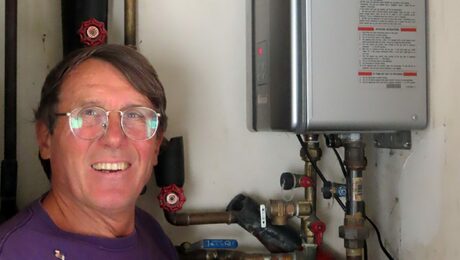
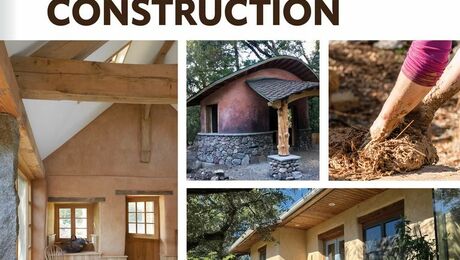
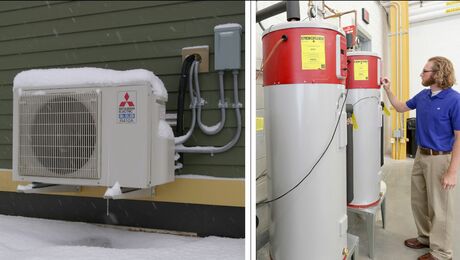
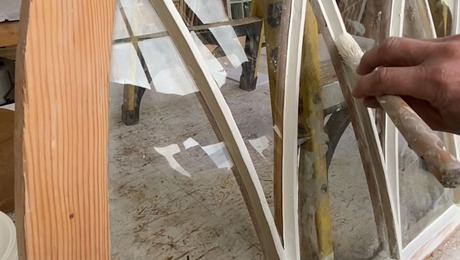
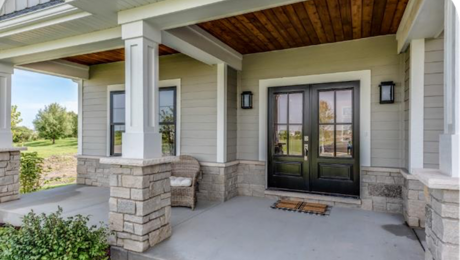
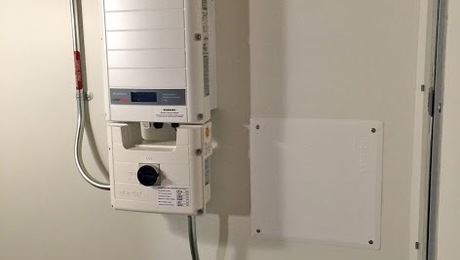
Replies
A lack of proper venting will be more likely the culprit for attic rain from my experience. Keep the moist air from entering the attic in the first place with a continuous air barrier.
canada-deck,
I often see some incidental mold on the underside of sheathing here in the PNW, which as RDH points out, is likely caused by radiant sky cooling. But in the absence of some other problem - usually a combination of poor venting, air-leakage from the house below, or mechanical equipment in the space - nothing that requires remediation.
Calgary experiences unique weather conditions you don't see elsewhere, with wild temperature and humidity swings occurring very quickly. Maybe they aren't as appropriate in that climate?
Vented attics are by far the most common roof assembly in Canada. I'd say they are also the easiest to get right, the most forgiving, and the simplest to modify or remediate. Unless this was a widespread problem linked to the assembly itself, rather than errors in the way it was built, turning away from them seems like throwing the baby out with the bathwater.
I've never seen this problem in my area (SE Michigan), unless there is either insufficient venting, lots of air leaks from the living space, or (most commonly), both. I could see it possibly being an issue in a very wet area like Malcolm's though, but I think we have less of those kinds of areas in North America than the drier (on average) weather we have in my area.
Vented roofs are very robust, and cheap to build, which are big pluses. Sealed attics are much more costly to do correctly in many cases, and in all cases are much trickier to do right. With a vented attic, all you need to do is follow the rules for NFA (Net Free Area) of attic vents at soffit and ridge, air seal the interior ceiling, which is usually easier to do than it is to air seal the roof line, then blow in enough loose fill insulation on the attic floor for your climate zone. Easy peasy, and that blown insulation is the cheapest way to insulate too -- and also one of the best. It's not often that "best" and "cheapest" go together, but they do here.
Bill
Vented attics do pose a different problem in areas that experience wildfires. Embers make their way into the attics and start fires, even though the wildfire flames are still far away, the embers sent into the sky land inside vented attics and create combustion. I believe it was like 80% of all wildfires start in vented attics due to embers.
They do sell vents that supposedly close off once the hot wax melts on the vents but embers have been known to travel miles in high winds. So no heat source means the vents will remain open. The more you vent an attic, the better chance you have of embers entering through the vents.
Too. We added insulation per an area program that covered much of the cost.
I'm experiencing cracked ceiling drywall seams. I thought this was a good thing. Had no idea what the heck was going on and read here it could be the bottom chord being warmer while the rest of the truss is cold could be the culprit. Makes kinda sense since the house is 40 years old, no issues, and the only new factor is the extra blow in insulation.
You may have drywall cracking due to the added weight of the additional attic insulation. Drywall can only support so many pounds per square foot, and that number is lower if the drywall is supported at wider intervals (i.e. 24" spaced attic floor joists instead of 16" spaced). When you get up to very high R values (R49+), insulation weight can be a problem. It is for this reason that I'd consider blown fiberglass over blown cellulose where the strength of the drywall is suspect, because fiberglass gives more R value per unit weight.
I'm going to be doing some R60 upgrades in my own home soon, with blown cellulose. I'm concerned about some of the older drywall that I won't be replacing, so my plan is to tack some 1x2 furring strips along the inside edges of the attic floor joists tight to the drywall, then lay 1/4" waferboard over those to provide a support for the insulation. Since I'm removing all the old insulation, I'll have the access to do this. This will keep all the weight off the drywall, except way out at the eaves where it's a thinner (and thus, lighter) layer anyway, and should prevent any cracking of the interior drywall.
Bill
Thank you for the idea to look into. I admit, while the layer is even, I'm not guessing in total each drywall board didn't receive too much total weight.
I had read here that added insulation can cause different parts of the trusses to move different. causing it, so kinda just assumed that. Thank you for the idea.
I think vented attics are mandated by code in Canada. I prefer a vented attic for the reasons that Malcolm gives, but I would not make the air/moisture barrier the drywalled ceiling - I would put a layer of sheathing on top of attic floor joists and then put the trusses on top of that.
This suggestion has been debated in several other threads, but to me this is an easy way to completely seal off the warm, moist interior living environment from the cold, vented attic.
rockies63,
Okay, here's one for you: If you were going to build the ceiling service cavity, what about doubling the rim-joist on it? If you also did that between the first and second floors you could use them as lintels (headers) and have none in the walls below. That would allow you to locate or move openings by simply putting a couple of king studs on each side, but otherwise doing no structural work.
I have seen that idea discussed in a few videos from Steve Baczek and Matt Risinger but I don't know if your local building department will allow it - they might with a structural engineer's stamp. You could probably do it without a stamp for exterior walls that don't have the ends of trusses resting on them or a stick built roof that used a ridge beam (not a board) and ridge beam posts fully supported going right down to the foundation.
rockies,
I just reviewed drawings which do a variation on that (just trusses, no service cavity). The raised-heel is inset by the width of two rim-joists, which the trusses bear on. I'd image inspectors would be even more comfortable if those doubled rim-joists were connected to a service cavity, and sheathed on the top side.
Malcolm, I'm a little confused at what you're suggesting.
We don't normally use rim joists with trusses, there's just a doubled top plate at the top of the wall that the truss sits on. The floor joist for the attic and the ceiling joist for the room below is just the bottom chord of the truss.
It seems that if you want more thickness than the bottom chord of the truss, the way to go is to ask the truss manufacturer to build it in. Basically a raised-heel truss but with a separate floor joist above the bottom chord. You could probably just scab a 2x6 across the face of the truss.
You wouldn't be able to make the floor the air barrier because the trusses would penetrate the floor.
DC,
The drawings showed raised-heel trusses set in on the top-plates the width of two LVLs. The house was a quite modernist design with floor to ceiling windows, so they did that because there was no room for lintels in the walls.
It got me thinking that if you did this over the load-bearing walls (and if the house was a two story one you also doubled the rim-joists below), it accomplished two things. It removed all the lintels from the exterior walls leaving more room for insulation, and it future-proofed the walls by making it easy to add or move openings during renovations.
I since found out it is a common practice for some kit home builders, which allows them to use the same basic shell, but customize window and door placement for each client.
In other discussions Rockies63 had discussed the merits of using another sheathed floor system as a service cavity under trusses. I was simply suggesting that if you were doing that, then doubling the rim-joists there might make sense to achieve the same things.
OK, now I'm really confused.
It looks to me like the truss is resting on the top plate and those rim joists aren't contributing anything.
The lintel-free wall is interesting though.
It seems to me that if you want a ceiling service cavity, the solution is either to have the truss manufacturer build it in, or build the walls higher and drop the ceiling. If you want the air barrier layer above the service cavity then put drywall or sheathing along the underside of the truss chords before dropping the ceiling.
The framing for the dropped ceiling only has to support the weight of the drywall and insulation so it can be quite lightweight.
DC- I think his image is showing the truss hung off that rim joist.
It begs the question of whether a double top plate is necessary.
Freyr --
That makes sense. I get it now.
fryer_design,
My quick sketch shows hangers, but I suspect the trusses could be designed to be top chord bearing.
The double plate isn't needed for bearing, but I'd probably include them anyway. They allow you to use pre-cut studs, keeps all the walls the same height, let's you overlap the framing, and whether useful or not are required on load-bearing walls by our code.
I was skeptical, but I read the study and was impressed by their thoroughness. To summarize, they built test sheds that were basically just a roof -- open to the air on the sides and bottoms. In their climate they found that in the winter condensation occurred on the underside of that roof, at night, and it occurred to the extent that it created the conditions for rot.
I was surprised by this. I have lived in two places that I think are very humid, Washington DC and coastal New England. In my experience, a roof like that will essentially last forever so long as the shingles are maintained.
DC,
You definitely see the effects of night sky radiance in attics here, especially on the north face if it is fully exposed. But:
- If it is the only source of the problems, it simply doesn't get bad enough to warrant remediation.
- That's not what is happening in Calgary.
Malcolm, in looking at your sketch, why not rest the trusses on top of the double rim joist instead of hanging them off the sides? A 9-12" high vertical rim board is stronger than two 1.5" horizontal top plates and if you did add dropped ceilings the much smaller ceiling joists could rest on top of the top plates (which is getting pretty close to my original suggestion of building a "second floor" service cavity).
rockies,
I agree. That's what I was suggesting to you. If you are including a service cavity, it makes sense to just double the rim-joists and set the trusses on top of the sheathing. That sketch roughly reproduces what I saw on the drawings I reviewed where (as is more common) there is no cavity. The idea works in both situations.
The rim-joists, wherever they are located, need to be a certain height to be useful, as they need to be sufficient to replace any lintel which otherwise would be over the openings below.
canada_deck,
You said "Don’t most other alternatives result in the sheathing being sandwiched between two vapor barriers?" This is not true. If you have enough exterior insulation you do not need an interior vapor barrier. Therefore the assembly can dry to the interior, which in this case is a conditioned attic. Whether or not the amount of exterior insulation for your climate is practical to install is another question.
Interesting to see that in a recent Q&A, Kohta Ueno, Joe L's colleague, had this to say:
"Whenever I get asked about “the best roof,” my go-to is a vented attic: insulation on the attic floor with a great air barrier, and no mechanical systems in the attic. This allows for low-cost fibrous insulation (achieving high R-values for cheap), low condensation risks (attic ventilation “whisks away” any humid air leakage in winter), and the ability to look for roof leaks from the underside. "